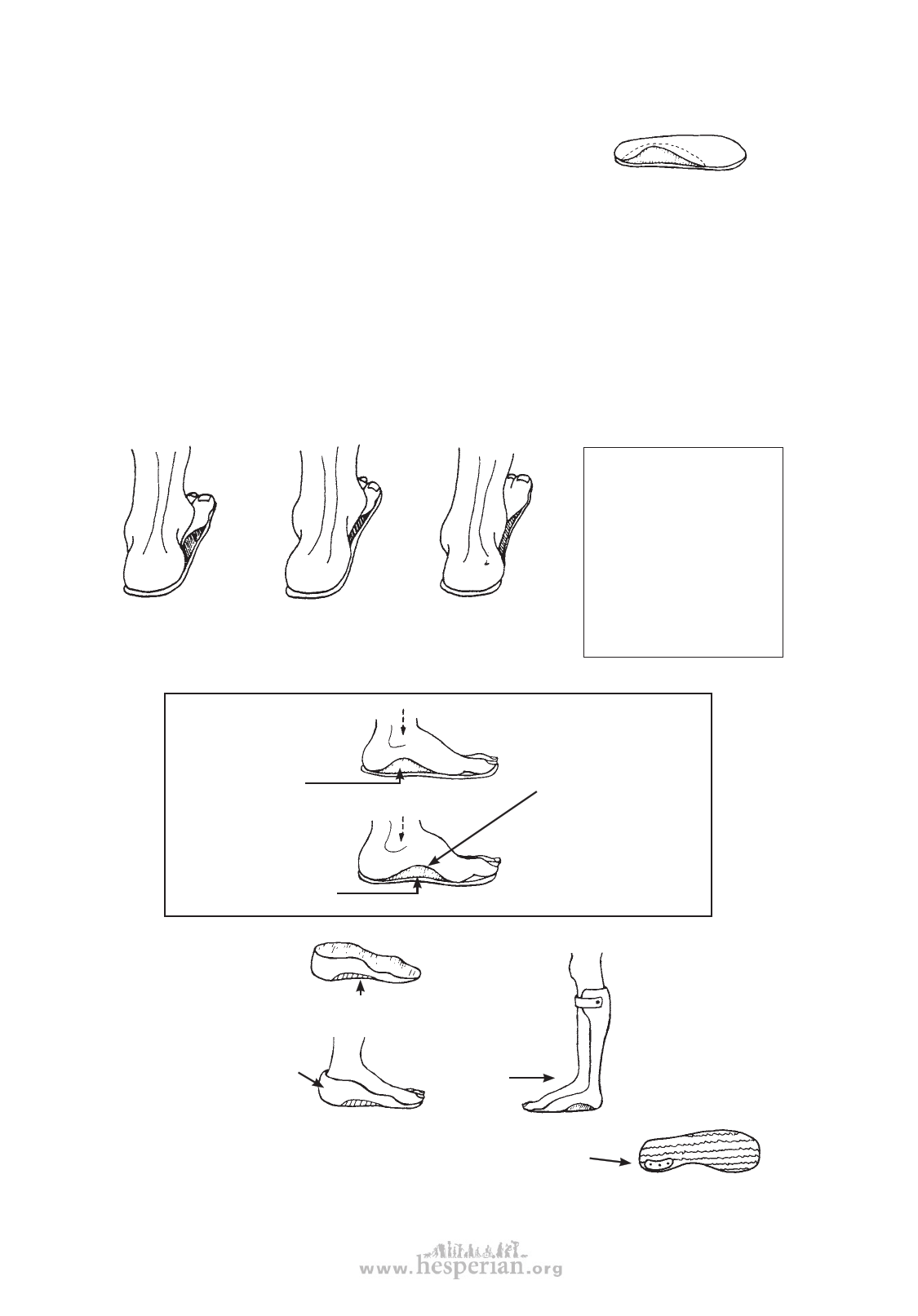
118 chapter 11
INSOLES AND OTHER FOOT SUPPORTS
Some children with flat feet resulting from polio,
cerebral palsy, or Down syndrome may be helped by
insoles or other foot supports. But other children will
not be helped. Each child’s needs should be carefully
considered. If after trying an insole for 2 weeks, the
child walks with more difficulty, change the insole or
stop using it.
An insole is a firm pad that is
put inside a shoe or sandal to
support the arch.
Insoles can be made of leather,
porous rubber, or a piece of a
car tire, shaping it with care
so that it will support the foot
comfortably.
Before making the final insole, put a piece of cardboard, wood or some other
material shaped like the insole, under the child’s foot. Try different heights to find
what seems to work best. Make sure the heel is in a straight line with the leg.
After making the insole, check the position of the foot. Do this with the child
standing on just the insole, and then with the insole inside the shoe. Watch him walk,
and ask him how it feels. If everything seems right, check it again in 2 weeks.
CORRECT – The heel
is in a straight line
with the leg.
TOO LOW – The heel
tilts outward. The insole
should be thicker.
TOO HIGH – The heel
tilts inward. The insole
is probably too thick.
CAUTION: A person who
has a weak ankle and low
arch sometimes cannot use
an insole, because it lets his
ankle turn outward as he
walks. He may have learned
to walk in a way that keeps
his ankle from turning out.
For such a person, an insole
may make walking more
difficult, or may force him
to use a brace to keep his
foot straight.
IMPORTANT: The thickest
part of an insole should be
directly under the ankle
bone, just in front of the
heel, like this.
It should not be in the
middle of the arch, like
this. This can deform
the foot more without
correcting the problem.
CORRECT
WRONG
WARNING: Many
commercial insoles,
and even orthopedic
shoes, have the arches
in this incorrect
position. Check them
carefully. If they are like
this, do not use them.
Also be sure shoes are
not so wide that the
heel slips to the side.
If the child’s foot is flat
or very floppy due to
paralysis, often an insole is
not enough. He may need
a short plastic brace that
supports the foot like this,
built-in
sole
or a brace
that
supports
the foot
and ankle,
like this.
There is probably only one shoe or sandal alteration that does
any good. A small metal plate on the inner edge of the heel stops
uneven wear—and may help prevent foot pain.
For
instructions
on making
plastic
braces, see
Chapter 58.
Disabled village Children